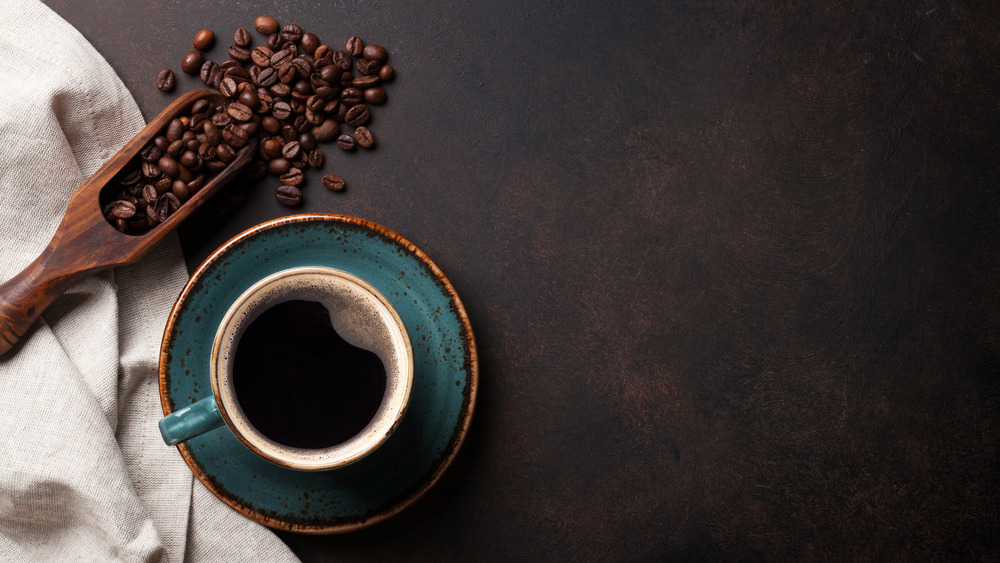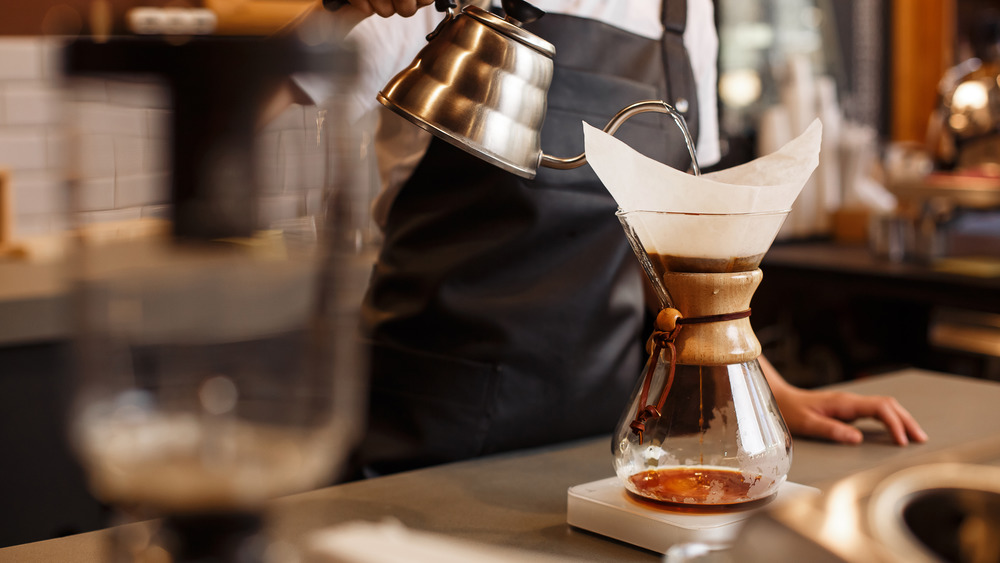How To Know If You Should Be Drinking Low-Acid Coffee
When it comes to coffee, people tend to know exactly what they like: one sugar packet, one creamer cup. Light roast or dark roast. Almond milk over dairy milk. Pour over or espresso. But throw acidity levels into the mix, and coffee can become a more complicated affair. As many might know, coffee is considered an acidic drink. While the pH of a glass of pure water is around 7, an average cup of coffee sits at anywhere from 4.85 to 5.1 (via Healthline). The lower on the pH scale, the more acidic a substance is (via USGS). And whether your concern is acidity itself or the taste of coffee, low-acid coffee could be for you.
For most, a typical brew is not a problem. But for people with acid reflux or IBS, a cup of coffee can spell discomfort that outweighs the many benefits of a hot cup in the morning (via Insider and Healthline). A doctor might suggest a special diet, which limits coffee and other foods and drinks that are hard on the digestive system, for these particular problems (via University Hospitals) — but it's unclear whether acidity itself in coffee is to blame for them. Funnily enough, beer, orange juice, and even soda are all more acidic than coffee (via the Kitchn), and according to Verywell Health, "there isn't any good evidence that it is the actual acid that most people find problematic about drinking coffee."
How can you make your coffee less acidic?
For many, coffee preferences might have to do more with the flavor compared to other coffees. When your barista calls a certain kind of coffee "acidic" or "bright," they're not necessarily describing its place on the pH scale, but rather its taste (via Healthline). So whether you need to avoid certain foods and drinks for your health, or you just don't like the taste of an acidic brew, there are workarounds. Coffee-lovers can still enjoy a good, strong cup of joe by making adjustments to the roast and origin of coffee they choose, how they brew it, and increasingly, buying from companies that make low-acidity coffee specifically for customers looking for a mellow, smooth drink (via Healthline).
According to the Kitchn, darker roasts tend to be less acidic in flavor (but not necessarily on the pH scale) because one of many kinds of acids in coffee called chlorogenic acid is broken down in the roasting process. Coffee that's brewed fresh also tends to taste less acidic than that carafe that's been out for hours. Cold brew is less acidic than hot coffee, because none of the acid-containing oils are released in the process (via the Daily Beast). And these low-acid coffees, recommended by Roasty Coffee, are often made from beans that are naturally low in acid and roasted lower and slower, which also produces a less acidic coffee.

